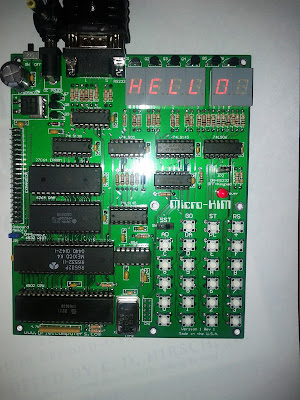As a present, my wife ordered the Micro-KIM from Briel Computers for me, which is a modern replica of the KIM-1 microcomputer. Even though I learned machine code on the 6510 of the Commodore 64, I remember seeing the KIM-1 in an electronics store much earlier, and I was intrigued right away. I can't wait for it to arrive to do some vintage programming. In anticipation of the Micro-KIM's arrival, I extended my 65xx cross-assembler (available for Windows, Linux and MacOS) with the paper tape format , either in the original binary format (option -p) or in a text representation (option -P) so that its output can feed directly into the Kim's terminal interface. I simply generated the format based on old documentation and it is still untested. If someone is interested in trying it out, I would appreciate early feedback. Otherwise, I will report back when I get my Micro-KIM. For example, using the assembler on this little test assembly program: .org $0100 .byte $FF $E...



